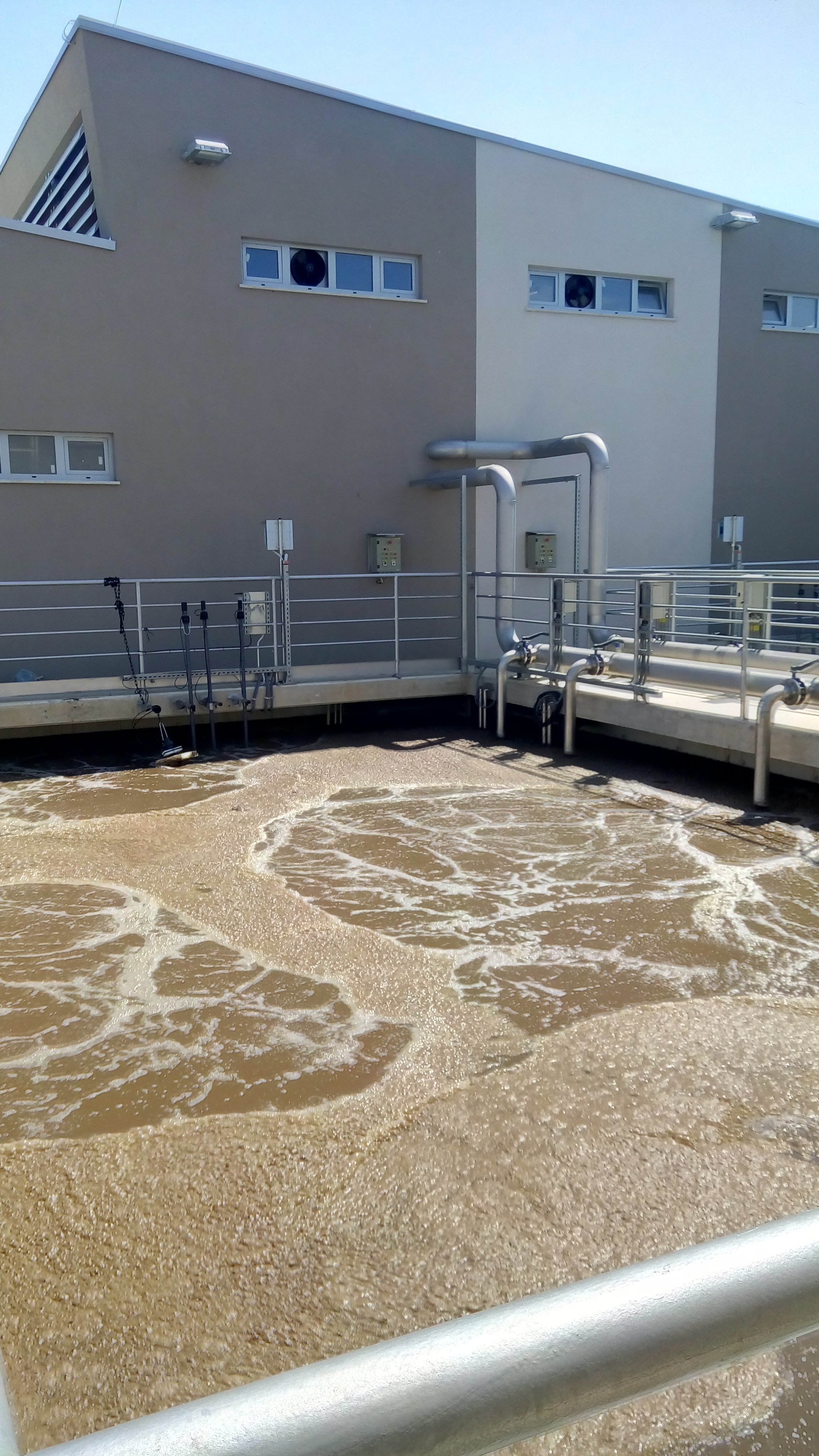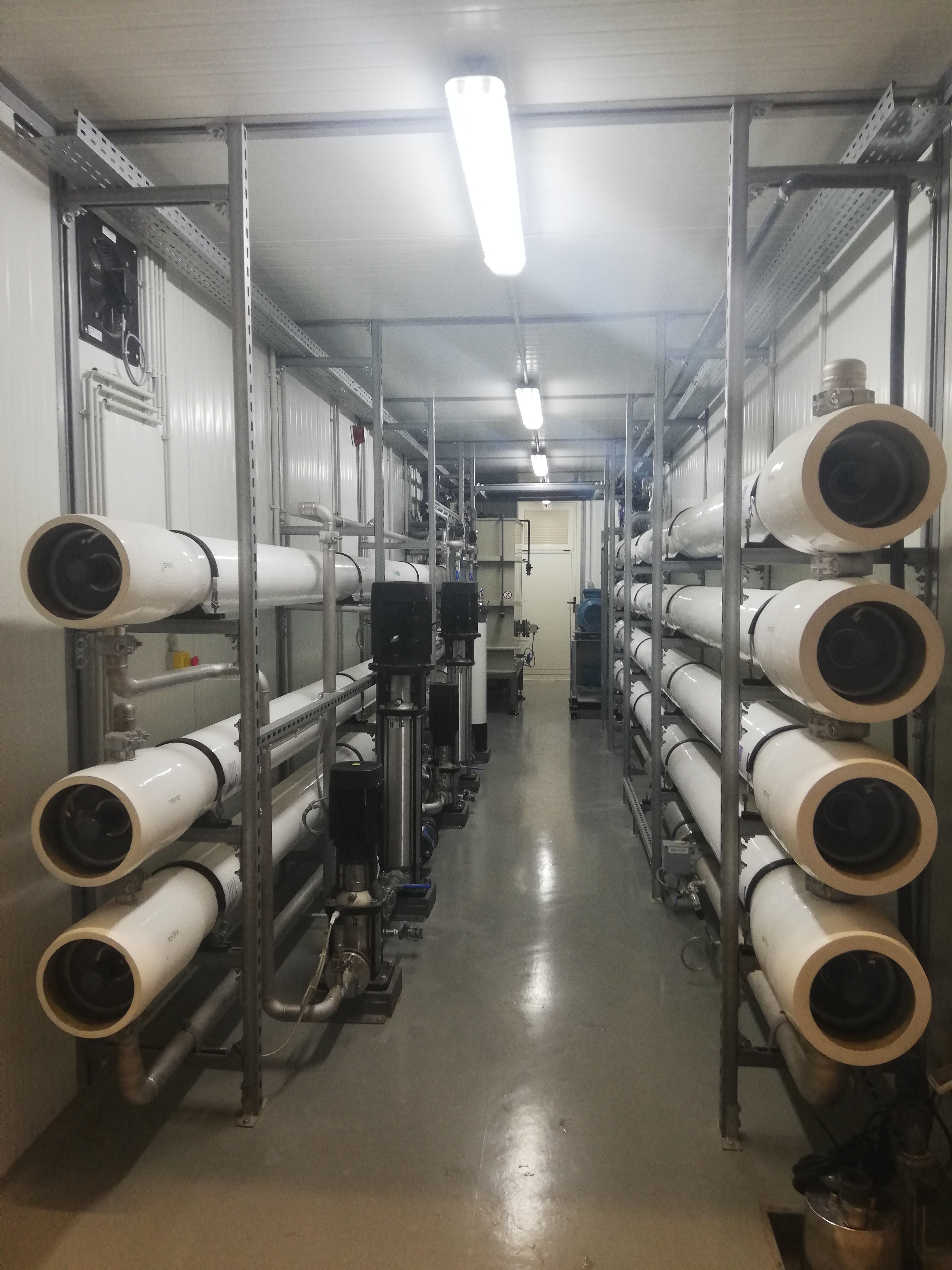Biological – chemical treatment of wastewaters in S.B.R.

Sequencing batch reactor (henceforth: S.B.R.) is widely used for the treatment of municipal and industrial wastewaters, including the leachate from landfills.
Wastewater generated at CWMC “KAŠTIJUN” is biologically treated in 5 phases, repeated in cycles. These include: Fill, React, Settle, Decant, and Idle phases. In the react phase, wastewater is treated under anoxic conditions to achieve denitrification, and then it gets aerated in the process of nitrification. Different chemicals can be combined in the S.B.R. as needed. This gets done by dosing chemicals used to maintain neutral pH and the ones that stimulate the growth of certain microorganisms inactive sludges. Activated sludge settles at the bottom of the Device during the Settlement phase, and clear biologically treated water appears on top of it. In the Decant phase, purified treated water gets removed from active sludge. At the end of the process, excess sludge gets removed as needed during the idle phase, which gets also treated on thickener and sludge drying centrifuge.
The advantage of S.B.R. is its flexibility and ability to adjust the water management process to various pressures on the water in order to obtain biologically treated water, which is then channeled to additional advanced processes for water treatment.
Reverse osmosis system and U.V. units for disinfection

Osmosis is a natural phenomenon that occurs when two solutions of different concentrations of dissolved substances get separated with a semipermeable membrane. Reverse osmosis is turning around this natural phenomenon by applying external pressure on a solution containing a higher concentration of the dissolved ions, which pushes water through a semipermeable membrane in the opposite direction, leaving the dissolved ions and suspended solid matters.
Reverse osmosis results in the removal of salt, inorganic matter, and heavy metals. This is done in a way that water gets filtered through membranes of the small diameter of pores under pressure, and this way appears pure demineralized water (permeate), which meets the regulations.
The water can be additionally treated with U.V. air, and chemicals (Natrium hypochlorite) can be added to a U.V. unit for disinfection to prevent bacteria from surging again in the treated water.

